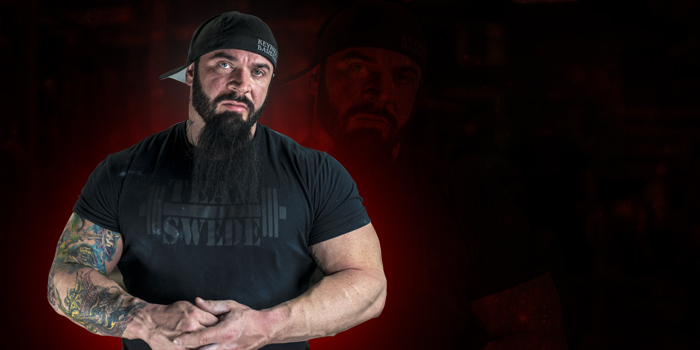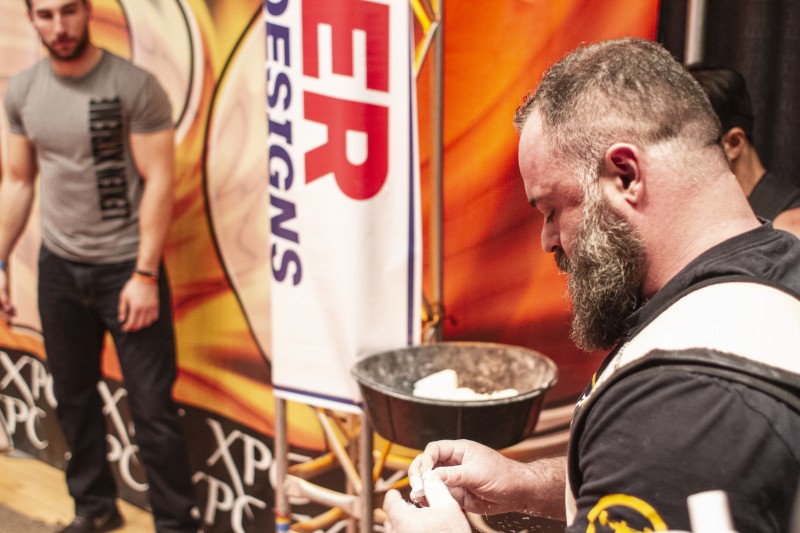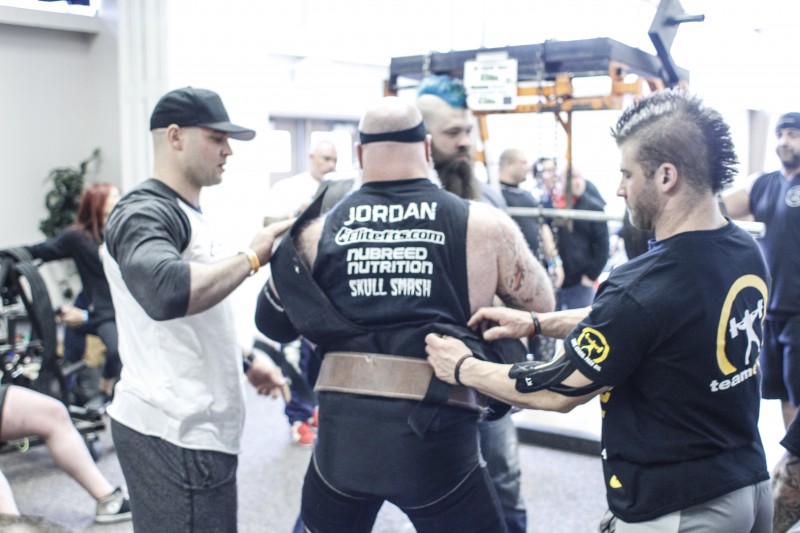
The strongest person doesn’t always win the meet. It’s usually the strongest smart person, the one with the most realistic game plan, who wins. That’s not to say the strongest person can’t sometimes be so much better than everyone else they still win, even making fool-decisions throughout. But they can also bomb out of the meet. I’ve seen some of the strongest raw lifters in the world do it. And even more often than that, I’ve seen them total a hundred or so pounds less than they are able to due to poor attempt selection.
Attempt selection wins meets; it’s really that simple. The protocol and formula I’m going to give you in this article are based on well over a decade of competition performance data. All of that is specific to my methodology but externally valid to any system of training that causes central fatigue accumulation (read: any system that actually works).
Let’s review and expand on some of what I covered in the OG 5thSet book on this topic.
RECENT: Live and Learn (And Pass On, Too)
With everything that's going on and the fact that you have probably trained for the last three to six months in preparation for the nine attempts you get to take on this one day, the last thing you want to have to worry about is figuring out a strategy for selecting your attempts.
This is where having a coach is awesome. You can just sit back and relax. When you are in the hole, you can focus on getting ready to take your attempt rather than stressing about whether it was selected appropriately.
Not everyone can afford a coach, but if you go into this prepared, there’s no reason to stress calling your own attempts anyway. Just make sure to select the next attempt as soon as you can after walking off the platform. Using the guidelines for attempts we’ll get from my formula makes things thoughtless — at least until the second attempt. The bar speed of the second attempt is going to determine how close to the formula limit we take our third. Remember: the formula for our third attempt is the limit. So we don’t go any further than that.

One important point, and I can’t stress this enough, is that you should have someone video your attempts. If you don’t know a single person at the meet, you can still set your phone on a stand or tripod or lean it against something to record your attempt. Of course, it’s cool to have videos of all your lifts for the ‘gram, but beyond that, it’s invaluable information for the lifter to have on the fly — or the coach, if there is one. It’s hard to get a good handle of your own bar speed without actually watching a video. The most common thing I hear people saying in this regard is the weight felt hard, like it moved slowly, but then they watch the video and see the bar actually moved quickly and smoothly.
Formula for Selecting Attempts
I have developed a formula using coefficients for each attempt and the training maxes taken during a lifter’s meet peaking cycle, which makes selecting attempts for the meet as close to fool-proof as we will get (fools are resilient). This is what I use for all of my lifters, and so if I was working with you, this is most likely how I would come up with your plan of attempts for meet day.
Like I mentioned before, this system was designed to be used with maxes taken during a peaking cycle. Preferably those maxes would have been taken on their own days, around a month or so out from the meet, after months of training. That’s how we peak with 5thSet. Of course, there is plenty of specific detail for exactly how we do it in the books, but this manual is for everyone.
Here is how the formula works. We take the best lift and multiply it by the corresponding coefficient for each attempt.
The coefficient for the first attempt is .9.
The coefficient for the second attempt is .97.
The coefficient for the third squat and deadlift is 1.04, but for bench press, the third coefficient is 1.025.
So for example, if the lifter’s max during the peak was 500 pounds for squat, we would multiply 500 x .9, 500 x .97, 500 x 1.04 to get our three attempts. That gives us 450, 485, and 520 for attempts. Remember that 520 is the upper limit for the third and should be called based on bar speed.
If the lifter’s max during the peak was 300 pounds for bench press, we would multiply 300 x .9, 300 x .97, 300 x 1.025 to get our three attempts. That gives us 270, 290 (rounded down), and 307.5 as the limit, which will probably end up rounded down to 305.
Remember the bench coefficient for third attempt is different from the other two lifts. With how we will select the attempts in mind, let’s take a look at how this should play out.
The Ideal Scenario:
- We walk off the platform after a successful attempt and immediately review video of the lift to check on bar speed.
- If that lift was our second attempt, we would determine how close to the limit to call the third; if it was our first attempt, we would stick to the script for the second (97 percent).
- If we aren’t confident about the max we are using from the peaking cycle for some reason, we could call the second based on the bar speed of the previous attempt, as well.
- Once bar speed has been reviewed, we go directly over to the table or expediter taking attempts and clearly state what we have decided for the next.
One of Many Suboptimal Scenarios :
- We walk off the platform after failing a lift horribly and embarrassingly and immediately review video of the lift to determine if hara-kiri would be honorable or advisable.
- We quit whatever nonsense type of training led us to this disgrace, then run 5thSet for an entire macrocycle, pick another meet and go nine for nine.
With the biggest issue out of the way, let’s take a look at some of the other things we can do to help ensure a noble and respectable performance.
Eating the Day of the Meet
Drink plenty of fluids right from the moment you wake up on the day of your meet. Never stop sipping, and never stop snacking, either. Between lifts and when warming up, it’s always a good idea to always be forcing fluids and snacking on salty foods. Be sure to eat enough to perform well. That doesn’t mean stuffing your face so you feel like shit, but be sure to consistently snack on food and sip fluids.

Activation/Warm-Ups
Warm-ups are an important part of preparation for a successful performance on the platform. Correctly selecting warm-ups can have a nice impact on the likelihood of executing all of your attempts. The vast majority of pulled muscles and minor injuries I have seen at powerlifting meets have happened during the squat. If I had to venture a guess as to why that is, I would say a combination of poor fatigue management while moving into the meet, insufficient hydration, and not being warmed up thoroughly before attempts, usually because the lifter waited too long to start.
Getting hurt during the squat is a sure way to stack the cards against yourself for the rest of the meet. Any time you get under that bar to take an attempt, you are risking getting hurt. Do everything in your power to prevent it. Show up to the meet on time so that you can pace yourself through warm-ups. Treat it like the beginning of a training session.
Do some bracing/activation warm-ups. Some great examples of this type of activation protocol are outlined in the 5thSet books, including exercise selection and sequence. From there, you can squat the bar a whole bunch, but make sure to reset every rep and treat each one like a max attempt. Brace hard. Take small jumps with lighter weights and just keep the reps low. Sip fluids between sets.
When You Are Not Lifting, Be Resting
Even meets that run like clockwork can span the entire day if there are enough competitors. Waiting around and stressing about when you are up will sap your strength. Once you are told to warm up for your flight, do it. If they aren't announcing that info, ask the meet director approximately when your flight will be. Until then, find a place to sit and relax. When the warm-ups for your flight come, and you are all done warming up, find someplace close enough to the platform to set up so you can clearly hear who is ‟on deck” and ‟in the hole.” Between attempts, clear your mind and think only about the lift you are about to perform. Visualize the bar moving smoothly. Do not stress.
Demonstrate Sportsmanship
If you miss a lift due to being red-lighted, do not act like an asshole. You have every right to ask a judge their reasoning for giving you a red light, but whether or not you agree, their opinion is what matters, and you have to respect it. It is okay to be angry but demonstrate good sportsmanship. Keep in mind that two judges had to agree you did something illegal for the lift to not pass.
If you have another attempt left, come back and make it perfect. If not, keep your head high and take it on the chin. Nothing earns my respect more than someone being a good sport after getting questionably lighted on a lift that might’ve been good. If you have a coach, they will argue any valid point for you if there is one. If you don’t have a coach, I’d give the judges the benefit of the doubt.
In other words, carry yourself like a mensch. Do your absolute best and accept what comes. If you refuse to accept you missed a lift because of something you can change, you can’t benefit from it.
I hope you all find this mini-manual helpful. If you do, please share it on your socials.
For those of you who’ve never done a meet, save this, and read it again before your first. Or just run 5thSet and take out any guesswork.











2 Comments